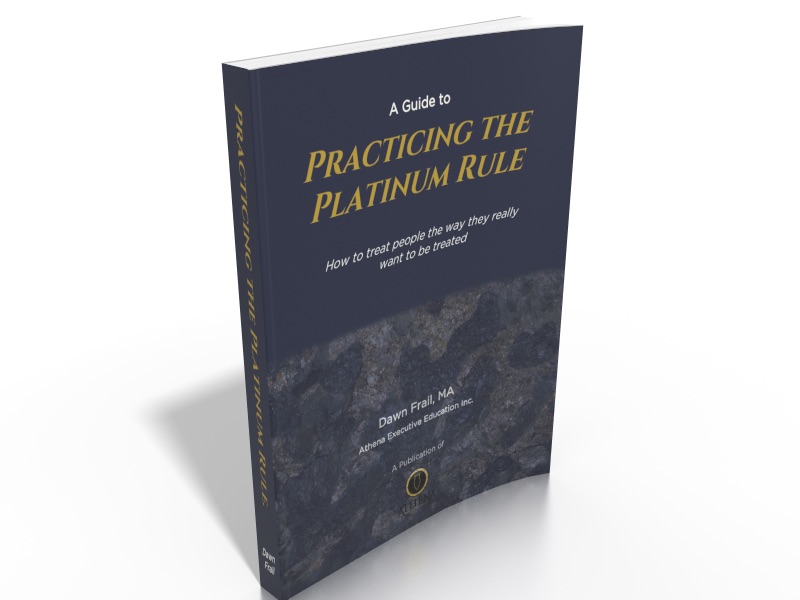We hear in the news and we see in our workplaces evidence that discrimination, stereotyping and biases still exist. We believe it’s other people, and not us, who hold these limiting and unhelpful beliefs.
If you ask us if we are biased against a group of people, we are offended by the mere asking of the question. We truly believe we treat people fairly and without considering race, culture, or gender.
While it may be true that we treat people fairly, it is not true that we don’t have biases.
Everyone has biases, and it is our belief that we don’t, or that these biases can be eradicated, that is the problem.
First, let’s all agree discriminatory behaviour is wrong. When we see people arrested at Starbucks or other things happening where people are clearly being discriminated against in some way, we know that this type of behaviour needs to be addressed and fixed. But fixing the behaviours can’t really happen unless we figure out what caused the behaviour in the first place.
So where does discriminatory behaviour come from?
From prejudices.
Prejudice is when we make up our mind about someone in ignorance of, and with disregard to, the facts. It’s a feeling we have or an attitude we hold that is based in hostility.
We form these attitudes and feelings toward someone, or a group, based on things we’ve experienced, have learned, or have been taught in the past.
My grandfather, for example, had a neighbour that he really didn’t like. I don’t know why he didn’t like him, or what caused the original fence war in the first place, but it didn’t matter. This neighbour spoke with a fairly heavy accent. I also remember that my father would say quite disparaging things about anyone he met who also spoke with that accent because in his mind, “they were all alike” and he believed that was a bad thing. It didn’t matter what we said, or what kind things his neighbour did, nothing would convince my grandfather to change his attitude toward his neighbour or this group of people.
So where do prejudices come from?
From biases.
A bias is a leaning. It can be either positive or negative. I am biased toward my grandchildren and believe that they are the smartest most beautiful people in the world. You might have the same belief about your grandchildren.
I know I am biased in this way, but there are some leanings that we have that we might not be aware that we have. And here is where life begins to get a bit complicated.
Biases are part and parcel of the process of categorization and stereotyping.
Categorization is something that helps our brains to process information so we can quickly make a decision.
If you meet a bear in the woods you might sense danger. If you are a bear expert, you might know if this bear will actually attack you, and you can respond accordingly. But I don’t know much about bears, bear behaviour, or attack patterns of bears. So when I see a bear, based on the movies I’ve seen and the stories I’ve read, I assume I’m in the wrong place at the wrong time and I need to get out of there.
While it may not be particularly fair to Yogi, the friendliest bear in Jellystone Park, our ability to make sense of the world with ambiguous or missing information can sometimes be helpful.
This kind of categorization happens with people as well.
Imagine you’re walking down the street and you realize you’re lost. You need to ask someone for directions and there are lots of people around you. You need to decide which person you will ask for directions, and you’ll make that determination based on who you judge to be the most able to give you good advice and send you in the right direction.
Now your brain kicks into high gear looking around at the people and you begin to categorize people based in part on what you see; gender, skin colour, hair colour, clothing, height and facial expression. What you don’t see is the process your brain goes through as it quickly sorts people into categories such as:
- Definitely don’t ask
- Definitely do ask
- Maybe ask
But are we even aware of the criteria that our brains are using? Oftentimes the answer to this is no.
And that’s where the whole issue of fixing unconscious bias comes in.
As I said earlier, believing we can fix an unconscious process is a bit ludicrous, and that’s not really what we’re trying to fix anyway. What we want to fix is the number of bad decisions we make, particularly the ones that result in the unfair treatment of people. So let’s look at how we do that.
- Aware
- Analyze
- Act
1. Aware
It begins with being aware of the fact that we have biases in the first place. Where they came from doesn’t really matter, but suffice it say that we’ve been collecting them since early childhood. Once we’ve got them, it’s hard to change them.
What’s not helpful is when we continue to operate with limited knowledge. To fix that, establish strategies, processes and tools to help bring those things to the forefront. Some people find it helpful to take an Implicit Association Test such as the ones offered by the Project Implicit collaborative research initiative. If nothing else, it will be a little workout for your brain.
It can also be helpful to understand some of the many kinds of biases that exist so we can be aware of the ones we might be prone to:
- Confirmation – relying on information that confirms preexisting beliefs
- Similarity – favouring someone like us
- Affinity – favouring someone with a mutual connection
- Affect – relying on our emotional gut feeling
- Anchoring – relying too heavily on the first piece of information
- Recency – relying too heavily on the last piece of information
- Commitment – tendency to act based on what we’ve previously said or done
- Endowment – overvaluing something we feel ownership for
- Halo – a positive attribute affects opinions about other attributes
- Horns – a bad attribute affects opinions about other attributes
- IKEA effect – disproportionately high value on things we created
- Availability – overestimate the importance of available information
- Conformity – believing something because lots of others do
- Inter-group – favouring people in our in-group
- Outcome – judging a decision based on the outcome
2. Analyze
While we don’t have any control over the unconscious processes of our brain, and we can’t go back and relive our childhood, we can take a look at the biases we hold and question the validity of them.

I had the amazing opportunity to work with Dr. Stephen Covey (Author: 7 Habits of Highly Effective People) and I remember him saying that he was thrilled when he came across someone who had a different opinion than he did because he saw it as an opportunity to learn something he didn’t know. What is your initial reaction when someone questions your ideas, opinions and beliefs? Is it one of engaged curiosity?
We need to be willing to question our beliefs and see if they still serve us today. I find that as I get older, some of the old maxims are no longer valid, let alone appropriate, in this current day and age. So we need to rethink long-held beliefs because the circumstances that caused them to form in the first place may no longer be true.
3. Act
Once we understand more about our unconscious biases and have brought them into the conscious where we can actually think about them, we need to take action to mitigate the negative effect they have on our decisions.
The first thing we need to do is to slow down the speed at which we make decisions. Likely all of us can remember a time when we hastily went in a certain direction, only to learn that if we had just taken a bit more time to think it through, we would have done something differently.
When we slow down, we have the ability, and opportunity, to ask more questions. We need a process, or a habit, of asking questions like “what else” and “why not” and “what if.” When we do, questioning our assumptions (aka biases) becomes our default.

Asking better questions is a great start because it leads to getting better answers. One of the best ways I’ve found to get better, and different, answers is to have different types of people in the room; different knowledge, skills and experience. In other words, diversity of thought is what gets you great answers to your great questions.
The final suggestion I’ll make is to look for ways to neutralize processes that might be biased. Checking the language we use is a good start. Say Chair instead of Chairman, partner/spouse instead of husband/wife. In many circles, references like police officer, flight attendant and firefighter have become commonplace. Even Star Trek identifies the final frontier as the place no one has gone before.
In job descriptions, words like aggressive, independent, and competitive to describe a perfect candidate might attract more men, and compassionate, considerate and pleasant might speak more to more women. Watch for examples and stories that speak to a certain gender or age group. Military and sports analogies have taken a hit because many feel they speak to different genders, and older references or outdated analogies (although many things vintage are in style) may cause younger people to feel excluded.
Finally, if a person’s gender isn’t germane to the conversation, just talk about the pilot or the CEO, not the female pilot or the woman CEO.
In the final analysis, is it true that what you don’t know CAN hurt you?
Yes.
Want to do something about it? At Athena, we specialize in helping leaders get better results from and through people, and that includes understanding how to leverage Diversity Drivers.
Want more information about how to unconscious bias impacts women specifically? Read How to Handle Hidden and Unfair Bias.

